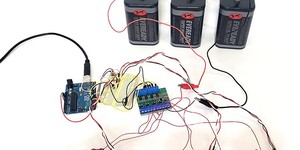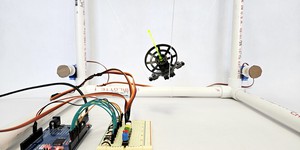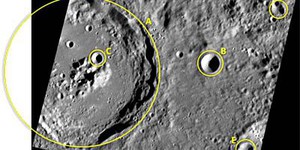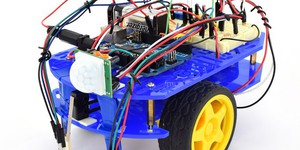Eleventh Grade, Space Exploration Science Projects (19 results)
Space exploration is an exciting and wide-ranging area. Getting into space (and back down) is hard, involving rockets and launch vehicles, satellites, spacecraft, re-entry systems, landers and rovers, robots, and orbital mechanics, not to mention hypothetical technologies like space elevators and artificial gravity. To survive and thrive in space, we must understand many additional issues such as human performance in space, the space economy, and the science of astronomical bodies.
|
Select a resource
Coding Projects
Sort by
|
Build an ion wind rotor, a model of an ion thruster, using a Van de Graaff generator and experiment with different electrode designs.
Read more
A mass driver uses electromagnetics to launch projectiles. In the future, such a device could launch payloads into space without the use of chemical rockets. This could lead to long-term cost savings when launching large amounts of material into space—for example, to construct a space station. In this project you will design and build your own working model mass driver as you learn some of the engineering principles behind how mass drivers operate.
Read more
New
Have you ever walked next to your favorite ocean, lake, or creek and seen plastic waste everywhere? Have you ever thought about how much plastic breaks down into microplastics and pollutes waterways? Scientists are coming up with new ways to remove these microplastics from our waterways, and now you can test them out for yourself at home.
Read more
Have you ever wondered what would happen if two satellites crashed into each other in space? While space may seem empty, Earth’s orbit is actually crowded with satellites and debris. In this project, you’ll step into the role of a space engineer, using real satellite data to model orbits, track their movement, and predict potential collisions. You’ll explore how gravity and speed affect a satellite’s movement and learn how scientists use simple math and code to prevent…
Read more
Mechanical switches are common in many machines and robots. They can be used to detect when a button is pushed, when a door is open, or a low-speed collision when two objects bump into each other. Switches can act as "bump sensors" on a simple robot to help it detect when it hits an obstacle. The robot can use this information to navigate around obstacles and avoid getting stuck. Can you build and program a robot that can drive around your house while using bump sensors to avoid obstacles?
Read more
How do you practice docking a spacecraft with the International Space Station or landing on Mars? With a room-sized cable-driven spacecraft motion simulator! In this project, you will build your own miniature, motorized version of a full-sized motion simulator scientists are developing that can move model spacecraft around in a controlled manner.
Read more
New
Are you ever annoyed by a poor Wi-Fi signal? What about when you try to send a text message, and it just won't go through because of poor cell service? Have you ever wondered what factors affect the strength of your signal and the speed of the connection? If so, this project is for you!
Read more
Have you ever wanted to analyze data from a NASA spacecraft? In this science project you will use data from NASA's MESSENGER mission to measure the diameter and calculate the depth of impact craters on Mercury. You will then analyze that data for relationships between a crater's depth and diameter. This is your chance to
perform a science project as a NASA researcher would!
Read more
Light sensors are part of many devices that we use every day. For example, they help your phone know when to automatically brighten or dim the screen based on ambient light levels. They can also be used to help solar panels track the sun, which helps the panels generate more power. Many spacecraft and planetary rovers are solar-powered. In this project you will build and program your own solar-tracking robot. Optionally, you can add solar panels and rechargeable batteries. Can your robot keep…
Read more
Astronauts on Mars missions must be protected from hazardous environments, like steep cliffs, rocky terrain, and extreme temperature variations. How can geofencing help? In this project, you will design a system that uses geofencing technology coupled with biosensors to ensure astronaut safety. The system will create a virtual boundary around astronauts, providing alerts if they approach dangerous areas or leave designated safe zones, or if their vital signs fall below a certain threshold. Can…
Read more
The Science Buddies Bluebot Kit contains parts to build four different robots:
A motion-activated robot that uses a passive infrared (PIR) sensor
A light-tracking robot that uses photoresistors
A line-following robot that uses infrared emitter-detectors
An obstacle-avoiding robot that uses bump sensors
However, in each project, the sensors are hard-wired to control the robot's motors. This allows the robot to steer left and right based on input from two sensors, but it does not allow…
Read more
In astronomy, a transit (or astronomical transit) is a phenomenon when a celestial body passes directly between a larger body and the observer. As viewed from a particular vantage point, the transiting body appears to move across the face of the larger body, covering a small portion of it.
The word "transit" refers to cases where the nearer object appears smaller than the more distant object. Cases where the nearer object appears larger and completely hides the more distant object are known as…
Read more
|

















